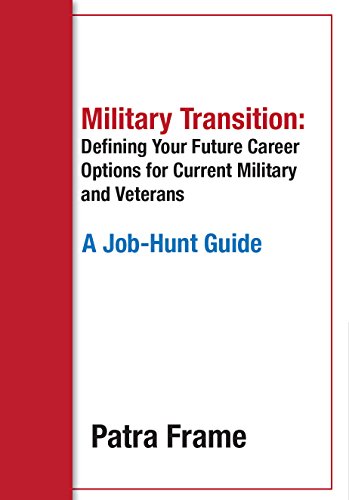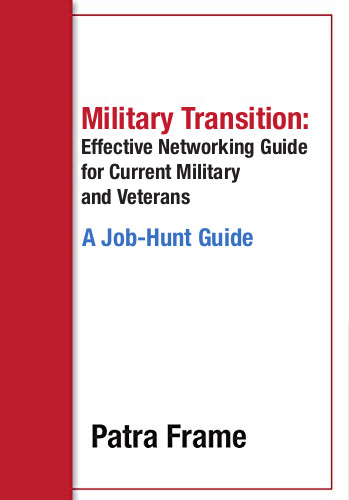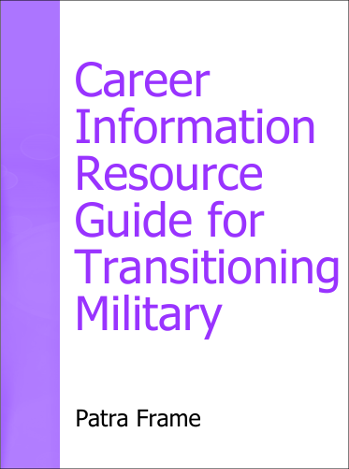Whether you are just thinking about changing jobs or need a new job quickly, there are common steps in job search which will help you succeed. This outline of the basics can guide you. As you read this, I hope you recognize most steps. Yet, many of us know them but do not do them. Many of us just jump in without a plan – and waste a lot of time as a result.
Step 1. Define Your Next Step
Before you write a resume or tell everyone you know that you need a new job, figure out what you really want to do next and where.
This can be a tough thought exercise for many. We limit ourselves by thinking only of linear progression. Start with a blank sheet and consider everything you would like to do in your next job.
Use that to write your own job description. Or use it to search among possible jobs on big job boards and Google. Try looking at what comes up if you put in the key skills you want to use. Do the same with job titles you think might be interesting.
- Which jobs look most interesting?
- Do you meet the requirements for these jobs?
- If not, what can you do to get there?
- If so, how do you demonstrate that?
- Who offers such jobs?
A clear definition of what you want to do next benefits from discussing that with people you know and trust to add information or ideas.
Step 2. Create Your Marketing Materials
You already know that job search is about selling yourself. Thus, you need marketing plans and materials.
Creating a solid resume, laden with keywords that describe your most relevant achievements for this next job is a critical first step.
Then, analyze your current online image and update it to meet your new goals. Clean up any problems. Build your profiles to support your next step and to incorporate the keywords and achievements from your resume. Add activity that demonstrates your interests. If you do not have a positive, professional image online – create one. Studies show most hiring managers and recruiters will look for you on social media. If you have not been active on LinkedIn, Twitter or Facebook – pick one and learn how to use it effectively.
A job search business card is a smart addition. One side contains the classic info: name, contact info, social media links, type of work you seek. The other side can show several key achievements, relevant education or certifications, or even a great short quote from a past boss or award.
Step 3. A Job Search Plan
You know what you want to do. You have the marketing materials started. Now how are you going to get there? Set up a job search plan to complete and track all the actions you need to take. Whether you do this on paper or electronically is your choice – just be sure you set it up in a way that works well for you. That helps ensure you use it effectively.
This plan includes:
- Networking (see step 4 below)
- Identifying target employers (step 5)
- Creating your career decisions matrix (step 6 )
- Interview preparation (step 7)
- Interview Follow-up (step 8)
- Closing out your job search (step 9)
Most job search involve iterations of each step. You talk to people and change your resume or reconsider some target employers. You read about job search practices and modify yours. Or work with a career coach or job search group and identify some missing goals or better ways to sell yourself. As you make significant changes, update the people who have already helped you too.
All this gets tracked in your job search notebook to help you move forward and to identify patterns which may signal problems.
Step 4. Connecting with Others
You talk to people every day. In job search mode, you are going to make many of those conversations into more focused ones about some information or support you need. One late 2019 survey indicated half of all job seekers did not even tell their spouses/partners they were looking for a new job! All of us need other people to make our search faster and smoother.
You need to:
- contact people you already know, from all areas of your life
- reach out to old connections you have from past jobs, school, community
- learn how to find and make new connections
Sitting down and trying to remember 400 names and contact info in one marathon session is not realistic for most of us. Suddenly trying to go to tons of seminars and meetings and events is silly without effective plans for what you want to achieve at each. Wasting time online looking for jobs is less than optimal.
Talking to people about your job search is best done in an orderly fashion so you learn and improve your target jobs and employers. Ask questions tailored to each person’s knowledge of you or the market. It is a two-way street, learn what you can offer in return. Pace yourself but do it carefully and consistently.
Step 5. Identifying Target Employers
Applying for jobs just because you see a listing with the right title is such a waste of your time! Think about employers you already know of and list those you find interesting. Ask people you know for recommendations. Your local library and the area economic development agency can help you identify employers.
Once you have possible employers, you want to research each to see if it offers the culture, mission, and values which match with your goals. Start with what they say about themselves. Look online for employee reviews. Talk to people who work there or have worked there for insider info. Mistakes in choosing a company are a big part of failure at a job.
Step 6. Create a Career Decision Matrix
Sounds formidable, yet this helps you make the best decisions. It is a checklist of what is important to you in this next career step. It may include: 2-3 of your values, personal or professional goals, work hours, or training/ development options. You might include minimum acceptable pay, location, travel and so on. You want to have no more than 8-10 items on the list for reality’s sake. Do this early in the process to help you focus on the right jobs and employers.
Use it later as you evaluate specific employers during interviews. When you get offers, compare them to your decision matrix to help make the best decision.
Step 7. Interview Preparation
As you make connections with employers, capture the who/what/research into your notebook. When you are contacted for a phone screen, video, or in-person interview, review what you know first. Update it by a search for new info, both on the company and the individuals you’ll be speaking with.
The second aspect of preparation is to review your own achievements as they relate to this job and employer. Pick out 5-6 of your successes and remind yourself of the details. Those will prepare you to answer a wide range of questions interviewers are most likely to ask.
Then prepare your own list of questions you need answered to help you evaluate the employer. This also shows the employer you are interested and prepared.
Organize yourself, your clothing, transportation or video background, and what you will carry in advance so nothing creates last minute stress.
Step 8. Interview Follow-Up
First and perhaps most critically – never stop your job search once you have a great interview or a promise of a job offer. Things happen in organizations. You may or may not get an acceptable offer in a timely manner. You should be in job search mode until you actually start a new job.
Within a day of any interviews, send a note to the person or people you talked to thanking them for their time and adding any useful information you did not get to in the interview. Reiterate your interest in the role and organization. Be brief – 2 to 3 short paragraphs is fine. If you are writing multiple people, remember to vary the contents – look at their role in the company and write to their interest. Most hiring managers see all the notes and exact duplicates makes you seem uninterested and lazy. Email is generally fine for such notes.
Additional follow-up by phone or email if they do not contact you within their stated time-frame is fine. Keep it positive! Offer to provide additional info if they need it. You can do this 2-3 times, a week or more apart.
If you are not interested in the job, send an email saying so. No need for details, just a simple note is fine. This note goes to the recruiter and hiring manager only.
Step 9. Closing Out Your Job Search
First, do celebrate your success in the search! We both know how tough this process is, so enjoy the results.
Notify any recruiters and hiring managers you have been active with recently that you have started a new job.
Thank everyone who helped with your search and update them on the new job within two weeks of starting it.
Update your social media profiles within two – four weeks of starting. This not only informs your remaining network but it looks good to your new employer.
Decide what information in your job search notebook is worth keeping and clean it up before filing for future use.
And this time, keep your networking going. Do a little each week and grow your skills while helping others. Both are good for your career – and for your next job search.




